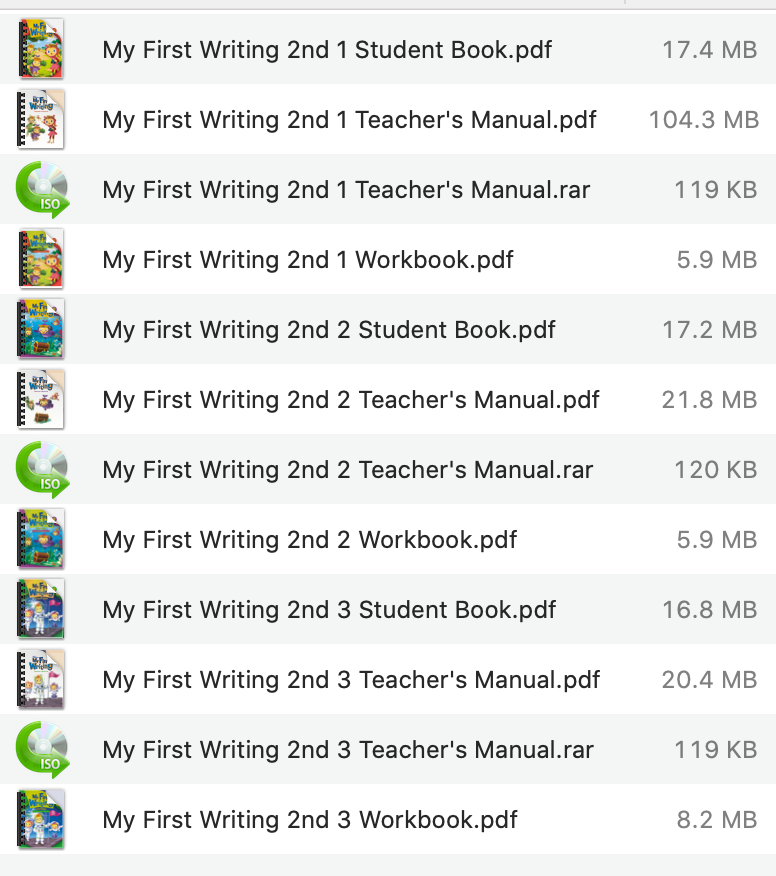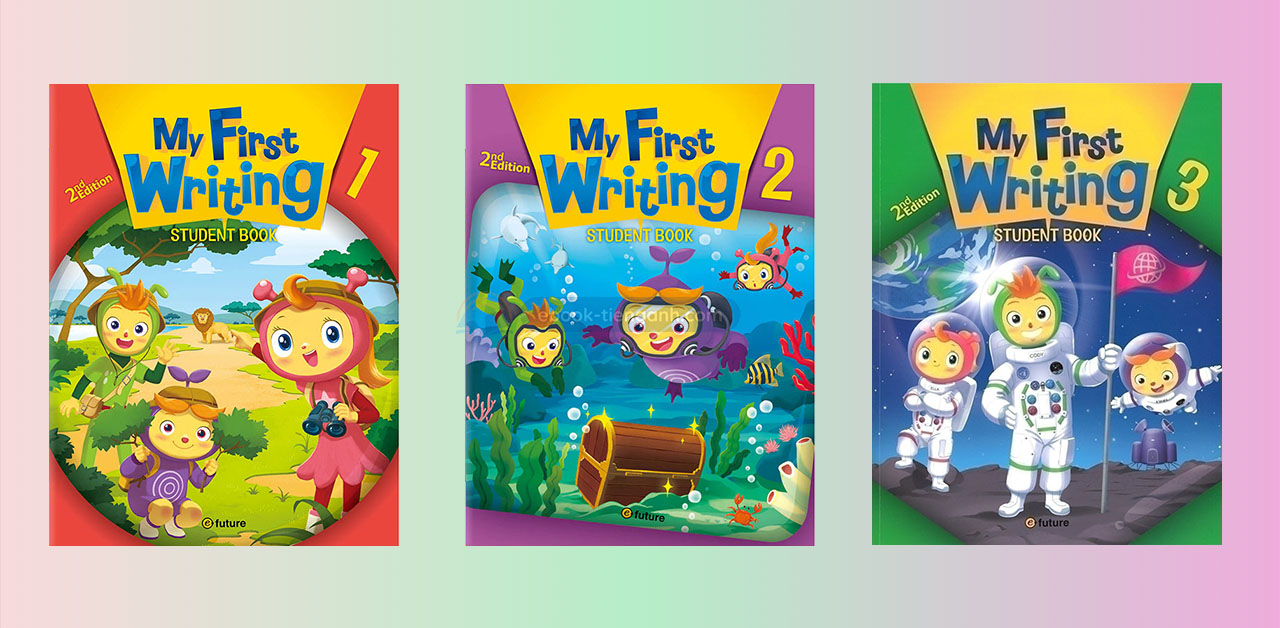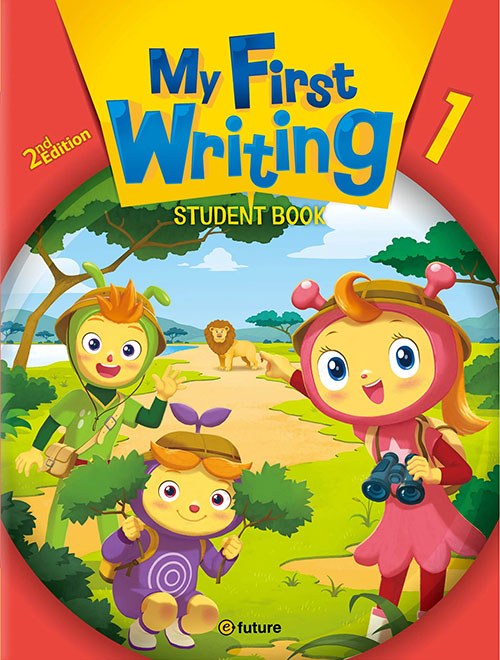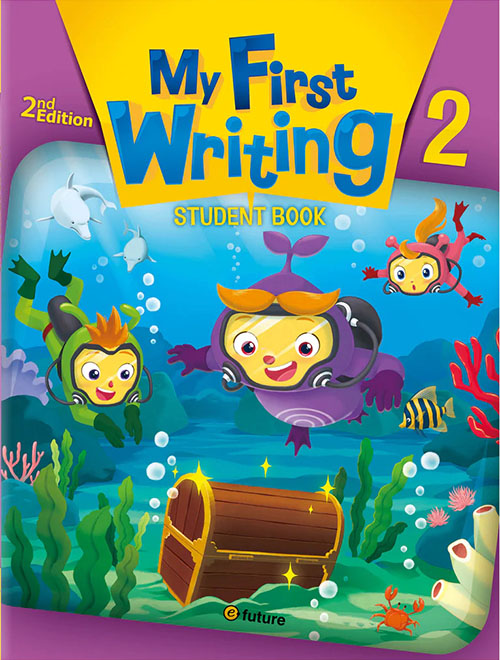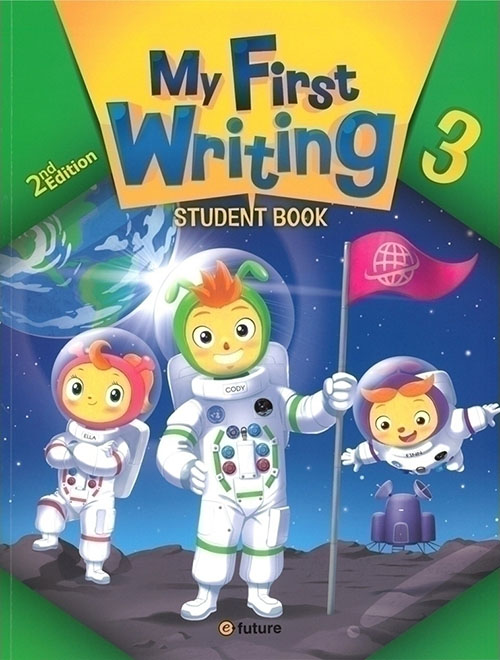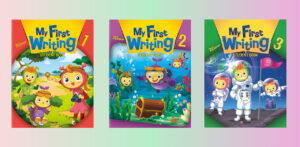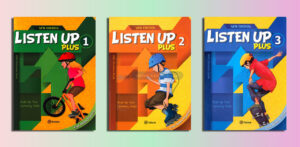My First Writing 2nd Edition
Level 1
My First Writing 2nd 1 Student Book.pdf
My First Writing 2nd 1 Teacher’s Manual.pdf
My First Writing 2nd 1 Teacher’s Manual.rar
My First Writing 2nd 1 Workbook.pdf
Level 2
My First Writing 2nd 2 Student Book.pdf – Sample: Click
My First Writing 2nd 2 Teacher’s Manual.pdf
My First Writing 2nd 2 Teacher’s Manual.rar
My First Writing 2nd 2 Workbook.pdf
Level 3
My First Writing 2nd 3 Student Book.pdf
My First Writing 2nd 3 Teacher’s Manual.pdf
My First Writing 2nd 3 Teacher’s Manual.rar
My First Writing 2nd 3 Workbook.pdf
✅ Get My First Writing 2nd Edition (all files): $5 for 3 levels
๏ Make the payment here: Click here
Overview of the “My First Writing 2nd Edition”
Contents
- 1 Overview of the “My First Writing 2nd Edition”
- 2 Who is suitable for ‘My First Writing 2nd Edition’?
- 3 The benefits of ‘My First Writing 2nd Edition’
- 4 Effective teaching and learning strategies for ‘My First Writing 2nd Edition’
- 5 Top Early Writing Skill Development Series for Young Learners: Effective Alternatives to “My First Writing 2nd Edition”
| ✅ Coursebook: | My First Writing 2nd Edition |
| ✅ Authors: | Casey Kim, Jayne Lee |
| ✅ Publisher: | eFuture |
| ✅ Levels: | A1 (Elementary) |
| ✅ For: | Primary School |
| ✅ Skill: | Writing |
| ✅ Publication year: | 2019 |
“My First Writing 2nd Edition” by eFuture is a comprehensive and interactive writing series designed for lower elementary EFL (English as a Foreign Language) students. This series is tailored to help young learners develop foundational writing skills in an engaging and systematic way. Here’s an overview of the course:
Target Audience:
- Lower elementary EFL students who are starting to learn how to write.
Course Approach:
- The series follows a unique 6-step writing process, which is designed to build basic writing skills through various activities, idea webs, model passages, grammar, and vocabulary.
Key Features of My First Writing:
- Systematic 6-Step Writing Process: Structured approach to sentence writing, providing a clear pathway for skill development.
- Familiar and Engaging Topics: Topics that children can relate to, making the writing process more interesting and relevant.
- Idea Webs: Tools to help students generate and organize ideas related to the writing topics.
- Easy-to-Follow Writing Projects: Projects that guide students through the writing process, enhancing their understanding and skills.
- Workbooks for Extra Practice: Additional resources for vocabulary and sentence pattern review.
- Teacher’s Manual: A digital manual filled with extra resources, lesson plans, answer keys, grammar worksheets, writing correction worksheets, tests, and more.
Components:
- Student Book and Workbook for each level.
- Digital Teacher’s Manual for each level, including lesson plans, answer keys, grammar worksheets, writing correction worksheets, placement tests, midterm and final tests, unit tests, and award certificates.
Supplementary Materials:
- The course offers a range of supplementary materials such as e-books, answer keys, translations, grammar worksheets, writing correction worksheets, sentence worksheets, word lists, placement tests, midterm tests, final tests, unit tests, syllabus, daily lesson plans, and award certificates.
“My First Writing 2nd Edition” is an ideal choice for young EFL learners beginning their journey in writing English. Its structured approach, combined with engaging topics and a wealth of resources, makes it a comprehensive tool for developing writing skills at the early stages of language learning.
Who is suitable for ‘My First Writing 2nd Edition’?
“My First Writing 2nd Edition” is specifically designed for a particular group of learners:
Lower Elementary EFL Students:
- The course is ideal for young learners in the lower elementary grades, typically ranging from kindergarten to early primary school. These are children who are just beginning their journey in learning how to write.
Young Learners New to Writing:
- It is suitable for students who are starting to learn writing skills, especially those who are new to constructing sentences and expressing ideas in written form.
English Language Learners:
- As an EFL (English as a Foreign Language) resource, “My First Writing” is tailored for children who are learning English as an additional language and need foundational writing skills in this language.
Students Requiring Structured Writing Instruction:
- The course is beneficial for learners who need a systematic approach to writing, as it follows a unique 6-step writing process that helps build basic writing skills.
Children Who Benefit from Visual and Interactive Learning:
- With its use of idea webs and other visual tools, the series is suitable for young learners who respond well to visual aids and interactive learning methods.
Learners Needing Engaging and Relatable Content:
- The series features familiar topics that children can relate to, making it appropriate for students who are more engaged by writing about subjects that are interesting and relevant to their own lives.
Students Preparing for More Advanced Writing:
- “My First Writing” lays a foundation that prepares students for more advanced levels of writing, making it suitable for learners who will continue to build on these initial writing skills.
In summary, “My First Writing 2nd Edition” is particularly well-suited for young, lower elementary students who are beginning English language learners and need a structured, engaging introduction to writing in English. The course’s step-by-step approach, combined with child-friendly content, makes it an effective tool for early writing development in the EFL context.
The benefits of ‘My First Writing 2nd Edition’
“My First Writing 2nd Edition” offers several benefits tailored to young EFL learners beginning their journey in writing English. This course is designed to make the learning process engaging, systematic, and effective for lower elementary students. Here are some of the key advantages:
Systematic Approach to Writing:
- The unique 6-step writing process provides a clear and structured way for young learners to develop their writing skills, starting from basic sentence construction to more complex writing tasks.
Engagement with Familiar Topics:
- The course covers topics that are familiar and relatable to young learners, which helps to keep them engaged and interested in the writing activities.
Development of Idea Organization Skills:
- The use of idea webs and other organizational tools helps children learn how to structure their thoughts and ideas, a critical skill in writing.
Foundation in Grammar and Vocabulary:
- The course integrates grammar and vocabulary development, which are essential for effective writing.
Enhanced Creativity and Expression:
- By encouraging children to write about topics they are familiar with, the course fosters creativity and self-expression.
Building Confidence in Writing:
- The step-by-step process and easy-to-follow writing projects help build confidence in young learners as they see their progress in writing.
Supportive Workbooks and Teacher’s Resources:
- The availability of workbooks and a comprehensive teacher’s manual means that learners have additional practice opportunities, and teachers have the resources to guide and support their students effectively.
Preparation for Advanced Writing:
- By laying a solid foundation, the series prepares students for more advanced writing levels, making it an excellent starting point for a long-term writing curriculum.
Interactive and Fun Learning Experience:
- The course is designed to be fun and interactive, which is crucial in maintaining the attention and interest of young learners.
Cultivation of Early Literacy Skills:
- “My First Writing” not only teaches writing but also contributes to the overall development of early literacy skills in young EFL learners.
In summary, “My First Writing 2nd Edition” provides a well-rounded, engaging, and systematic approach to writing for young EFL learners. It helps build essential writing skills, fosters creativity, and lays a strong foundation for future writing development.
Effective teaching and learning strategies for ‘My First Writing 2nd Edition’
Effectively teaching and learning with “My First Writing 2nd Edition” involves adopting strategies that align with the course’s structure, which is designed to cater to young EFL learners. Here are some effective strategies for utilizing this series in teaching and learning:
Follow the 6-Step Writing Process:
- Adhere to the systematic 6-step process provided by the course for teaching writing. This structured approach helps young learners grasp the fundamentals of writing in a clear and sequential manner.
Utilize Familiar Topics:
- Engage students with the familiar and relatable topics provided in the course. This approach can make writing more accessible and interesting for young learners.
Incorporate Idea Webs:
- Use idea webs as a tool to help students organize their thoughts. This visual aid is particularly effective in helping young learners plan and structure their writing.
Encourage Creative Expression:
- Provide opportunities for students to express their creativity through writing. Encourage them to write about their own experiences and interests related to the topics covered.
Reinforce Grammar and Vocabulary:
- Integrate the grammar and vocabulary lessons from the course into writing activities. This helps reinforce language learning while improving writing skills.
Practice and Review:
- Use the workbooks for additional practice and review. Regular practice is key to reinforcing the writing skills taught in the student book.
Use the Teacher’s Manual:
- Take advantage of the resources available in the digital teacher’s manual, including lesson plans, answer keys, and supplementary worksheets, to enhance teaching effectiveness.
Provide Feedback and Corrections:
- Regularly review and provide feedback on students’ writing. Use the writing correction worksheets for guided practice in making corrections.
Encourage Peer Review:
- Involve students in peer review exercises where they can learn to give and receive constructive feedback.
Visual and Kinesthetic Learning:
- Incorporate visual aids and hands-on activities into writing lessons to cater to different learning styles, especially for younger learners.
Build Confidence in Writing:
- Acknowledge and celebrate students’ writing achievements, no matter how small, to build their confidence.
Interactive Writing Activities:
- Use interactive writing activities, such as group story creation or sentence building games, to make learning more engaging.
Parental Involvement:
- Encourage parents to participate in their child’s writing practice at home. Share writing assignments or activities that they can do together.
Connect Writing to Reading:
- Integrate reading activities with writing tasks. Reading relevant materials can inspire ideas and improve writing skills.
By integrating these strategies, educators can effectively use “My First Writing 2nd Edition” to teach young EFL learners how to write in a structured, engaging, and supportive manner.
Top Early Writing Skill Development Series for Young Learners: Effective Alternatives to “My First Writing 2nd Edition”
For learners seeking alternatives to the “My First Writing 2nd Edition” series by eFuture, which is designed to introduce young learners to writing in English through structured exercises and engaging content, several educational series offer similar approaches to developing early writing skills. These alternatives focus on enhancing writing abilities in young learners with a combination of phonics, vocabulary, and sentence construction activities. Here are some notable series that provide structured writing instruction and practice for beginners:
- “First Writing Practice” by Usborne Publishing: Offers young learners a fun and interactive way to practice writing through various activities and stickers, which help develop motor skills and basic writing proficiency.
- “Handwriting Practice” by Scholastic: This series includes books designed to help children improve their handwriting with guided practice, engaging exercises, and motivational stickers.
- “Write On!” by Teacher Created Resources: Provides practical writing skills for early learners, starting with basic sentence construction and moving towards simple compositions, including engaging exercises to practice writing skills.
- “Building Writers” by Learning Without Tears: A comprehensive writing series that helps develop young students’ writing skills from basic to more complex structures, focusing on fluency in writing sentences and paragraphs.
- “Spectrum Writing” by Carson Dellosa Publishing: From grades K through 8, this series offers age-appropriate instructions for developing writing skills, encouraging creativity, and providing clear guidelines for writing mechanics.
- “Zaner-Bloser Handwriting” by Zaner-Bloser: A well-known series offering detailed handwriting instruction integrated with writing activities to improve both handwriting and writing skills at an early age.
- “Scholastic Success with Writing” by Scholastic: Provides ample practice with both creative and technical writing, specifically designed to meet the needs of young learners as they progress from simple to more involved writing tasks.
- “Kumon Writing” by Kumon Publishing: Uses a step-by-step approach that helps children develop fine motor control and communication skills through writing practice, starting with very basic writing exercises.
These alternatives offer robust preparation for young learners beginning to develop their writing skills. They provide a mix of handwriting practice, creative writing exercises, and foundational grammar instruction to ensure a comprehensive development of early writing abilities.

